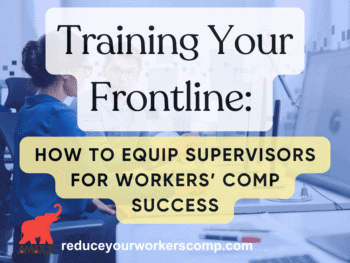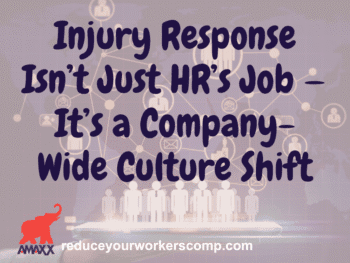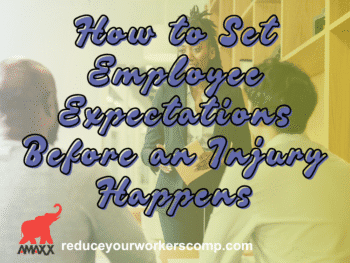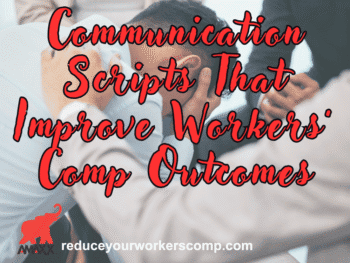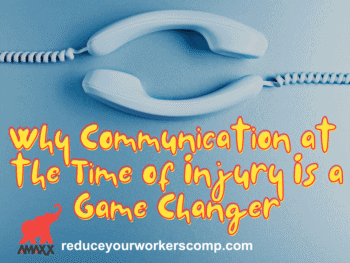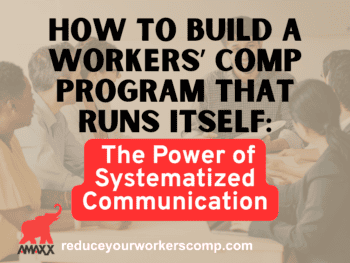
Basic Responsibilities of the Employee
Employees have several responsibilities when it comes to their workers’ compensation claims. Information related to the injury must be reported in a timely and accurate manner. Some of these responsibilities include:
- Reporting the work injury – completing the correct forms and reporting the incident to the right person;
- Understanding the training, they receive regarding workers’ compensation issues and how it applies to their situation; and
- Engagement in the process – receiving medical care, being engaged in vocational rehabilitation, and contacting the employer regarding return to work issues.
These are some of the many things an employee needs to do following a work injury. When they receive proper training and education, the result should be to take the right steps. For example, less money is spent throughout a claim when the employee returns to work promptly. Now is the time to develop policies and procedures to assist an employee in navigating the workers’ compensation system to reduce program costs.
Proactive Steps Employers Can Take
Employers and other interested stakeholders can reduce their workers’ compensation program costs by developing policies and procedures that are easy to understand. Given America’s diverse workforce, these forms should also be prepared in commonly used languages such as Spanish. Everyone should have access to telephonic translation services.
- Create “checklist” type forms that are accessible to employees and supervisors. These forms should create a roadmap for the claims process, including what happens when the workers’ compensation insurance carrier denies a claim;
- Ensure the employee receives the name and contact information of the claim handler promptly;
- Provide information to the employee on what information they need to provide to the claim handler. Examples include pay stubs for wage loss benefit payment and medical records that outline restrictions on activity; and
- The name and contact information of the employer contact regarding workers’ compensation matters. This can include the name of the work injury or return to work coordinator.
Efforts to provide the employee with this information can ensure they know who to contact and what information they need to provide. This will help streamline the process and improve overall employee morale.
Document Before the Injury
Employers can also reduce stress and provide better medical care following a work injury by ensuring they have proper documents before the injury occurs. One tool that can be used in the creation of a medical history card personalized to the employee. These cards can include information that is specific to the employee and should be kept in a safe and secure location:
- Employee’s name, address, and other contact information;
- Emergency contact information for the employee. This should include cell phone and email addresses;
- Documentation regarding prescriptions being used by the employee. Information collected should include the name of the drug, dosage, frequency, and the nature of the condition it is being used; and
- List of allergies and allergic conditions.
Other considerations could include having a health care directive on file and having this information in an easily accessible but secure location that can safely time and stress following a work injury. This information will also be helpful if the employee is unconscious or unable to respond following an incident. This information can even be located on file at the employer’s contracted health care network to ease security and confidentiality concerns.
Conclusions
Anxiety runs high following a work injury, driven by employees not familiar with the workers’ compensation process. Employers and interested stakeholders decrease this fear and increase workplace morale by ensuring all employees have complete information regarding the claims process. They can also take steps to have medical and contact information readily accessible to assist in injury-related medical care. Employees have been better prepared to navigate the process and assist the claims team with accurate and complete information by implementing these processes.

Contact: mstack@reduceyourworkerscomp.com.
Workers’ Comp Roundup Blog: https://blog.reduceyourworkerscomp.com/
©2021 Amaxx LLC. All rights reserved under International Copyright Law.
Do not use this information without independent verification. All state laws vary. You should consult with your insurance broker, attorney, or qualified professional.





